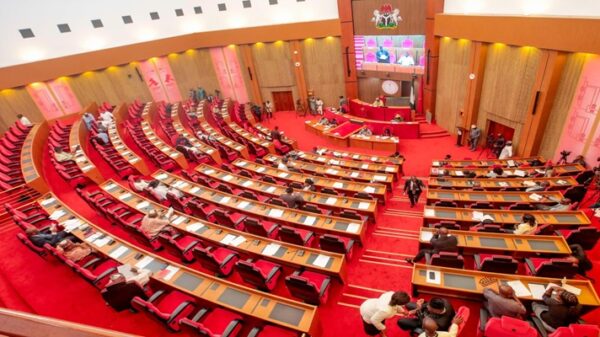Dangote Cement has said that it is boosting production in order to close the gap between the supply and demand of cement.
Rabiu Umar, new group chief sales and marketing director, Dangote Cement, said this in Lagos at a meeting with newsmen on Monday.
About 40 per cent gap in cement supply had led to significant increase in the price of cement across the country.
Although most manufactures claim that they had not increased their factory price, middlemen had increase the price of the commodity, citing difficulties in getting supply.
Umar stated that the company was building more capacity as it recently invested in a new line that had been completed in its Obajana plant. The line was only waiting for power to commence operations, he said.
He said, “We have a new plant in Okpella, Edo state, that will start operations very soon. For the last couple of years one of our plants in Gboko, Benue State has not worked, but we have re-started the plant all in a bid to make sure there is enough production.”
Umar explained, “In every business, what drives the price is the demand and supply. Now as a business, we have not increased our price up until this point. So what has happened in price increment in the cement products is the forces of demand and supply.”
Umar gave the declining COVID-19 crisis, the combination of monetary policy changes and reduced capital market returns as the reasons for increased construction activities.
He said, “We got into COVID-19 last year and immediately after the pandemic, there was a surge in demand, and it is not particular to Nigeria alone.
“A couple of countries across the world like Mexico, South East Asia, among others are also experiencing the same.”
He said that though the company had direct control over its ex-factory prices, it had no control over the ultimate price of cement in the market.
He said it was important to distinguish Dangote’s ex-factory prices from prices at which retailers sold cement.
Umar disclosed that the company would be bringing in 2,000 brand new trucks to ease distribution challenges.
“We are buying these trucks and putting them out there to make sure that the distribution is also taken care of. This new development will lead to thousands of direct jobs in the country, apart from both direct and indirect jobs that the plants will also create.
“Globally, by the time we are done, we believe that the additional capacity we will put in the market compared to what we have today is probably the size of each of our competitors in terms of the additional volume that we will put in the market.”
He added that increasing production capacity would likely make impact in reducing the price of the commodity.
![]()




























































